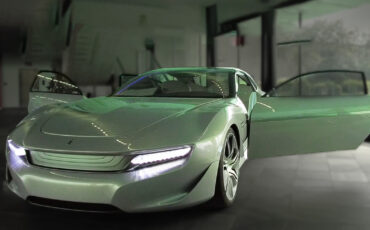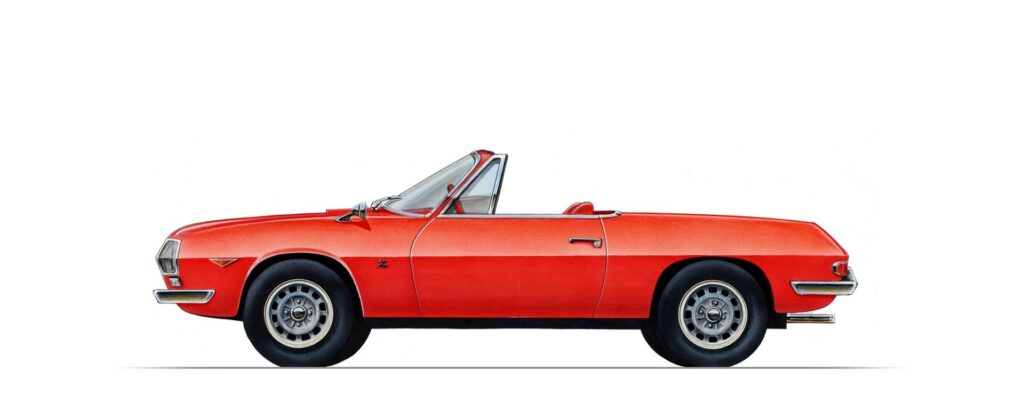
In the early months of 1968, Zagato, the coachbuilder from Milan, embarked on a new venture called the Competition. This project was commissioned by Cesare Fiorino and commenced with the Fulvia Sport chassis type 818.332 number 001890, concluding with number 001911. During this time, the idea of creating a spider came to the minds of the Zagato team. They decided to make minimal modifications to the design of the coupé, and entrusted Ercole Spada with the task. Spada skillfully removed the roof of the Fulvia Sport while preserving the distinctive centerline that runs along the side of the coupé.
In the Spider, the ledge transforms into the upper edge of the back, which is entirely flat and houses the canvas soft top. When necessary, this top can be folded and concealed in the trunk. Just below this line, you will find a small flap that, similar to all coupé series (818.132, 818.332, 818.362), holds the spare wheel.
Based on this reasoning, the space behind the driver’s and passenger’s seat, which is typically present in the Fulvia Sport, becomes insignificant. As a result, this space is removed, resulting in a reduced wheelbase of the Spider by approximately 15 centimeters (5.9 inches) compared to the coupe.
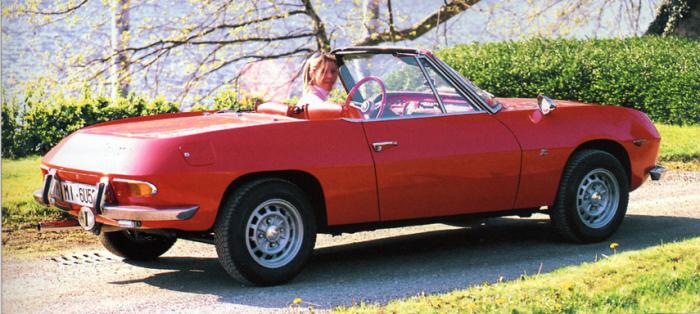
In early 1968, the initial prototype is dispatched to the “Salone dell’Auto” in Turin. This strategic move by Zagato is completely rational considering that both the Flaminia (manufactured by Touring from 1960 to 1964, with a total of 847 cars produced) and the Flavia (produced by Vignale from 1962 to 1967) had previously introduced and labeled their respective versions as “Convertible” Spiders.
Furthermore, on December 31, 1966, all operations of Touring from Milan had ceased, while Vignale was on the verge of being acquired by De Tomaso, which was absorbed by Carrozzeria Ghia.
The Zagato proposition was rational as this coachbuilder was operating at full capacity and constructing the Sport variants of Fulvia. However, the Chivasso headquarters declined the prototype they received, providing insignificant justifications. The harsh truth was that Pesanti, the owner, had recently initiated promising private discussions with Fiat, and many managers were apprehensive about an expansion of the production lineup, which could potentially hinder or halt the operation that was only officially unveiled in 1969.
The Lancia’s refusal is the reason behind the Zagato frieze adorning the rear of the car. It is not a Fulvia Spider, but rather a Zagato Spider. Meanwhile, in Milan, a second specimen was recently constructed (the only one remaining, as the first one vanished in Turin, possibly due to a car accident). Elio Zagato personally brought this second specimen to the Salone dell’Auto in Barcelona. It was there that the Spider caught the attention of a Spanish admirer, who fell in love with the vehicle and ultimately purchased it.
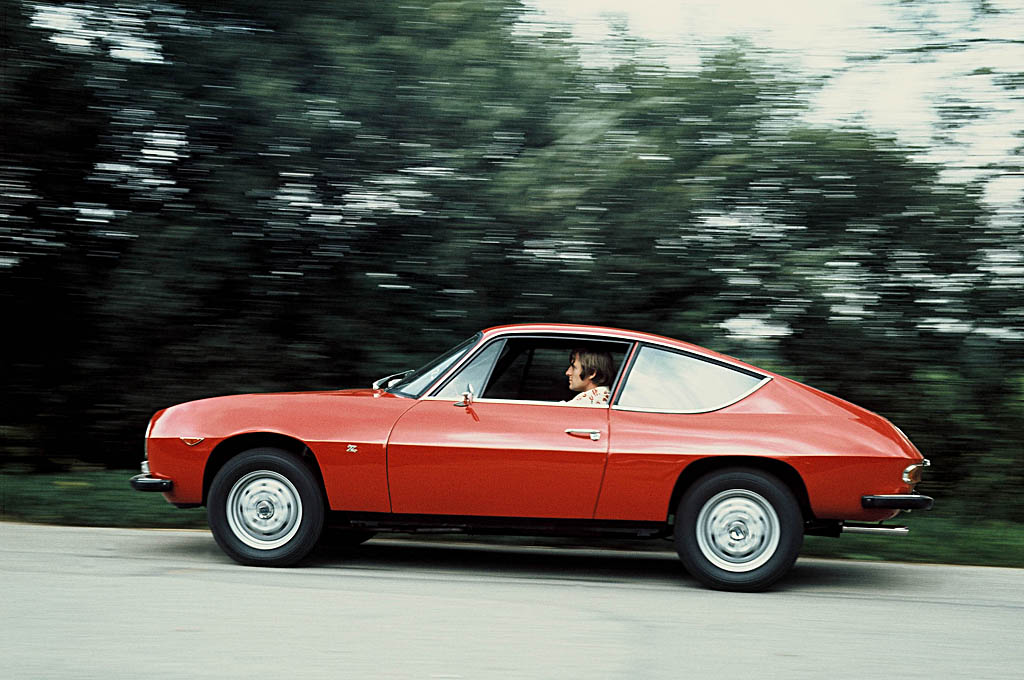
In 1986, Michele Marchianò released a book on Zagato cars, which he dedicated to the Lancia Fulvia Sport and the Alfa Romeo Junior cars. Additionally, he thoroughly analyzed the Spider, leading Guido Lamperti (an ardent Lancia enthusiast) to uncover the sole remaining specimen. Lamperti, being determined, embarked on a quest throughout the Iberian Peninsula alongside Marchianò.
The two mens discovered it, repainted in black, not as pristine as when it arrived in Spain, but Lamperti brought it back to Italy, restored it, and registered it with an Italian license plate. The only difference, compared to the year 1968, is the Fulvia frieze in zamac fixed on the front grille. The rest is influenced by contemporaneousness with the Competizione 13′ alloy wheels, Campagnolo (headlight frames with the shaping for the plexiglass setting. However, there are also innovative elements that will be seen in the subsequent production of Fulvia Sports cars. The taillights are not the same as those of the NSU Prinz in the first three series; instead, they are the larger rear lights of the Peugeot 204. Additionally, the front headlight frames (also with the shaping for plexiglass on the edge) have the inner part painted black. Both of these elements will be present in the subsequent series of the Sport Coupè, the 818.650 and 818.750.
The color combinations and finishes are correct, however, it is the chassis number that captures our interest: 818.332, specifically chassis number 001119. The reason behind this is already explained: there is no resetting of the frame number between the 818.132 series and the subsequent 818.332 series. This indicates that the transition occurs between the Sport 818.132 with number 001202 and the 818.332 with number 001203. Therefore, the Spider with number 1119 belongs to the first series 818.132.
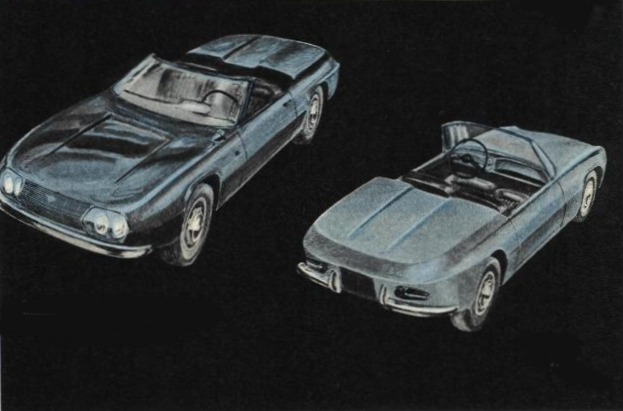
The spider was initially a frame from the first series, and its sale was merely a hypothesis. To prevent any issues for the future owner, who was expected to be Italian, the chassis number and the license plate were kept the same. However, the situation was different for the Competizione prototype, which was destined for a competitive future. The chassis number, 818.132, indicated that it belonged to the first series, while the license plate indicated that it was part of the 818.132 series with a 1300 cc engine. It is evident that these two cars were produced simultaneously. These details shed light on the historical events that took place in the past.
The initial production series consisted of 202 specimens, including 200 coupés and 2 spiders. However, the sport cars with a 1216cc engine were deemed underpowered, leading to the installation of a new engine in the subsequent series, particularly in the spiders and the ultra-light racing version. Notably, the race displacement class for these cars was 1300 cc. All of this helps us understand Lamperti’s determination in his search for and acquisition of this Zagato model. He recognized its historical significance and desired for it to return to its home country.


